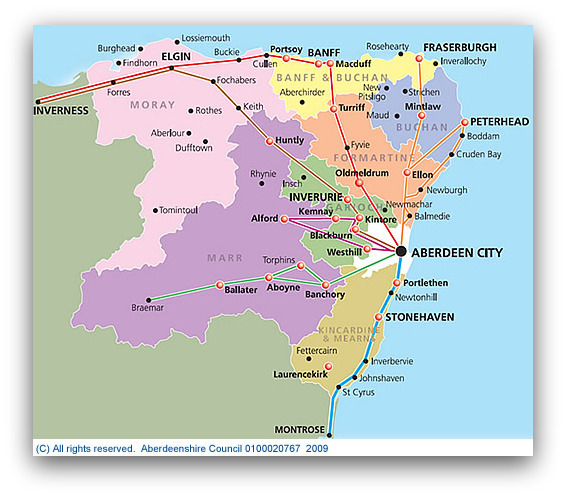.
While touring Scotland’s beautiful Aberdeenshire region, we heard that the Aboyne Highland Games Annual event was taking place, so Mairiuna, Jean-Claude and myself, traveled to nearby Aboyne city to experience our first Scottish Highland Games!
The abolition of the powers of the chiefs which followed the defeat of Culloden and the accompanying banning of all things Highland put an end to such gatherings, but at the beginning of the nineteenth century when the proscription of the tartan and the bagpipes had been lifted, and the nation, thanks to Sir Walter Scott, was beginning to take a keen interest in all things Highland, the gatherings were revived, and since then have spread in every place where there are descendants of the Clans.
Walter Scott - Portrait
The sports which accompany such gatherings still show their links with the past, in the competitions for dancing and bagpipe music, in the granite balls which are used for putting the stone, and in the wooden shafts of the hammer which replace the flexible steel handles, though the conventional head of the blacksmith’s long-handled hammer has been replaced by a metal ball.
Readers of Waverley will recall Sir Walter’s account of such a gathering and of the impromptu athletic competitions that followed the military exercises. Such competitions must have taken place on the Aboyne Green when Mar’s Highland army camped there after
marching down from Braemar where they had raised the standard in 1715.Source: http://www.aboynegames.com
Wonderful Piping Bands, Heavy Events (throwing shot, discus or wire hammer, caber toss), Light Events, Highland Dancing (what a cardio work-out!) and Fiddle are all great competitions that takes place in this perfect venue for family fun.
On this side of the ocean, during the Glengarry Highland Games, in Maxville, Ontario, Canada, Josée Morneau took the 3rd place on the professional podium and she also won the 2007 Fergus Scottish Festival and Highland Games Women’s Open Event.
“Ce que j’aime des jeux écossais, c’est que les épreuves sont toujours les mêmes et que les poids des roches et des marteaux sont égaux d’une compétition à l’autre, indique-t-elle. Je peux alors m’entraîner et tenter de battre mes records personnels. C’est une motivation supplémentaire. “
The Caber
This is the most well known and popular of the heavyweight Scottish events. The competitor must “pick” (pick up) the caber, run, and toss it so it lands straight out from him/her at a 12 o’clock position. The caber is tossed for accuracy, not distance. The judge must “call it” just as the caber hits the ground. A side judge will sometimes be used to determine if the caber rotated through 90 degrees – if not – it’s a “Fifer” and not counted. The Caber can be any size, and can range between 18′-26′, and weigh from (approximately) 100 lbs. – 150 lbs. Size is important, but so is the athlete’s style.The athlete gets three attempts in this and all the heavyweight events.
Wow….I’m impressed!..aren’t you?

Judges at Aboyne Highland Games, Scotland © Scotiana 2007
You might ask yourself: do we have to be Scottish to compete in the Games?
The answer is no. You can join the field if you feel like it and start mastering the arts.
Talk soon!
Janice







Leave a Reply